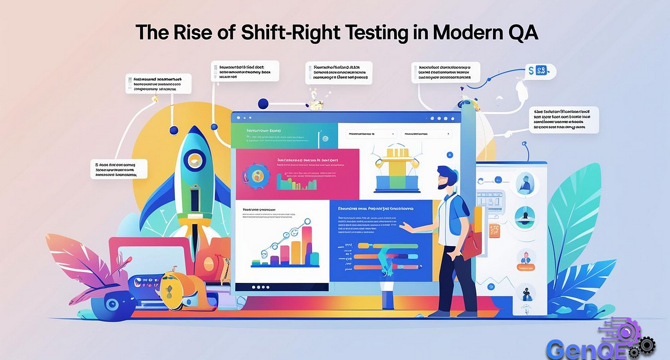Medium
3w
168

Image Credit: Medium
Testing in Production: The Rise of Shift-Right Testing in Modern QA
- Shift-Right Testing is a complementary approach enhancing traditional QA by incorporating real-world feedback, observability, and resilience validation in live production environments, marking a shift in software quality mindset.
- It reimagines testing as a continuous activity extending beyond release, utilizing techniques like canary releases, A/B testing, monitoring, chaos engineering, and user behavior analytics.
- The philosophy recognizes that pre-production testing cannot replicate real-world complexities, emphasizing the importance of production insights for identifying performance bottlenecks and usability issues.
- Shift-Right Testing offers advantages such as faster release cycles, smarter decision-making based on production insights, and the ability to gradually deploy changes with canary releases and feature flags.
- Challenges include the necessity of robust rollback mechanisms, data privacy considerations, and organizational alignment for successful implementation of Shift-Right Testing.
- The evolution towards Shift-Right Testing represents a shift in how the software industry views quality assurance, emphasizing quality as a continuous process throughout the development and deployment lifecycle.
- The future of testing lies in a continuous quality assurance model integrated into every phase of software development for faster time-to-market and higher quality products.
- Shift-Right Testing complements rather than replaces traditional Shift-Left testing, offering the advantage of detecting hidden risks in production environments while Shift-Left focuses on early defect prevention.
- Successful implementation requires attention to challenges like robust rollback mechanisms, data privacy, and organizational alignment across development, operations, and product teams.
- Shift-Right Testing, with approaches like canary deployments, feature flags, real user monitoring, synthetic monitoring, and chaos engineering, is accessible and beneficial for organizations of various sizes and technical sophistication levels.
- The combination of Shift-Right and Shift-Left testing creates a comprehensive quality assurance strategy addressing different risks during various stages of the development lifecycle.
Read Full Article
10 Likes
For uninterrupted reading, download the app